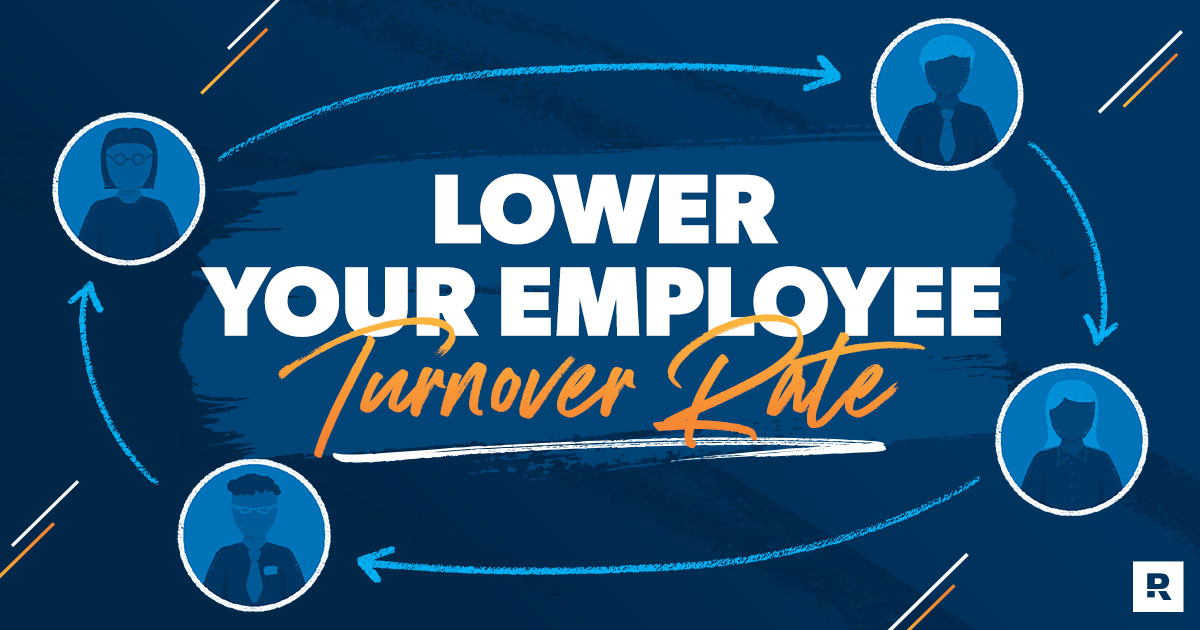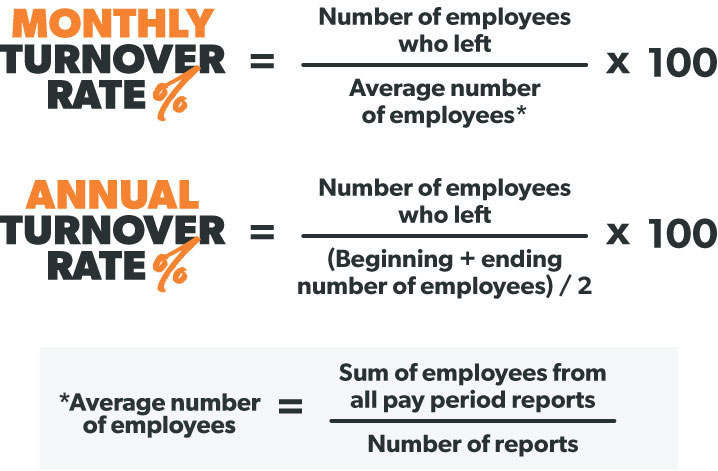Calculating your company’s employee turnover rate is one thing, but actually discovering the why behind it is a totally different thing. In fact, it’s this second part that people tend to ignore. Why? Because it’s complicated. Employee turnover isn’t like a math equation—there’s usually no hard and fast solution to it. So to really start digging into the why behind your company’s employee turnover rate, you’re going to have to ask some hard questions and, even more than that, listen to some hard answers.
Think about this statistic for a minute: A jaw-dropping 52% of employees who leave voluntarily (meaning they weren’t fired) say their leader or the organization could’ve done something to prevent them from leaving.1 What’s even worse is that replacing an employee can cost your business an average of one-half to two times that employee’s annual salary.2 Gulp. Think about how much money your organization could save just by reducing your employee turnover rate.
Listen—we know that’s all easier said than done. But with the right tools, you can make it happen! So, let’s crunch a few numbers and get to work on improving your turnover rate.
What Is Turnover Rate?
Employee turnover rate is the percentage of your employees who leave your company over a specific amount of time. Think about all the people who quit voluntarily, get fired, or choose to retire—that’s who you should factor in when calculating your company’s turnover rate. (You don’t need to include employees who are let go due to company needs.) Why is this percentage so important? Because it tells a story about your business and, more specifically, your employees’ experience working at your business. You need to keep track of when and why employees “turn over,” not just wave goodbye and hope you can replace them as quickly as possible.
How to Calculate Turnover Rate for Your Company
Okay, we tried to avoid it as long as possible, but here comes the math. Don’t worry though, it won’t be complicated. Most companies want to calculate turnover rate on a quarterly (the average of three consecutive months) or on an annual basis so they have enough data to pull some meaningful takeaways from.
Here’s how to calculate turnover rate:
What Is Considered a High Turnover Rate?
Of course, the question every leader wants to know when it comes to turnover is: What is considered a high turnover rate? And the answer is that it depends on the business. A retail giant will have a lot more employee turnover than, say, a law firm. You’ve got to calculate it over time, combine that with what you know to be true about your specific business and industry, and factor in your understanding of your employees.
Look, nobody wants to be in a bad spot with employee turnover. It’s a huge, expensive pain in the butt that takes a ton of time and effort to fix. That said, a high turnover rate usually happens because of a combination of things, like company culture, compensation, benefits, job market conditions, employee stress . . . the list goes on.
But it all boils down to one thing: A high turnover rate typically isn’t a good thing. If you want to compare your business’s turnover rate to national averages, the Bureau of Labor Statistics is a great place to start. Beyond that, the most effective way to reduce turnover rate is to take a long, hard look at how your employees experience working at your company.
How to Reduce Turnover Rate
Truly understanding your employees’ motivations and what they’re dealing might not solve all your company’s retention problems, but it’ll at least get you closer than not doing those things! You should really take some time to find out answers to questions like:
- Do we provide competitive salaries/hourly wages?
- Do we offer competitive benefits—financial or otherwise?
- Do we have strong leaders in place? How are our leader-employee relationships going?
- Do our employees work well together or is the team dynamic off? How are we keeping a pulse on this?
- How committed is our company to our employees, actually?
- How do we show our employees we value them and are committed to their growth and development?
- During exit interviews, what are some consistent messages we’ve heard? What actions have we taken based on that feedback?
It’s also super important to really understand the competitive hiring landscape. What’s that mean? It means knowing where you stand in the marketplace and staying ahead of the times—or your competitors—with what you’re offering employees.
Click here for free, SHRM-accredited webinar content on all things HR and business leadership.
While conventional benefits form a good base, today’s employees want and need more than just the basics. They need life-changing benefits to justify staying in one place for more than a few years. Things like flexible paid time off and sick days, generous maternity/paternity leave, or a financial wellness benefit can go a long way for your employees.
Because, after all, recruiting and retention aren’t just about hiring new employees. It’s about continuously investing in your culture and your team so your employees will want to stay with your company. And that means your employee retention strategies—your culture, compensation and benefits—need to be on point.
Add More Value to Your Employees’ Lives
Look, your company’s employee turnover rate doesn’t have to doom your business. There’s hope! Having a healthy employee turnover rate is possible. And it doesn’t take a complex process to get there—it really just comes down to adding value to your employees’ lives. By doing that, you’ll be giving your employees what they truly want and need—and you’ll keep them around longer.
Employee retention is more important than ever. Keep learning here.




